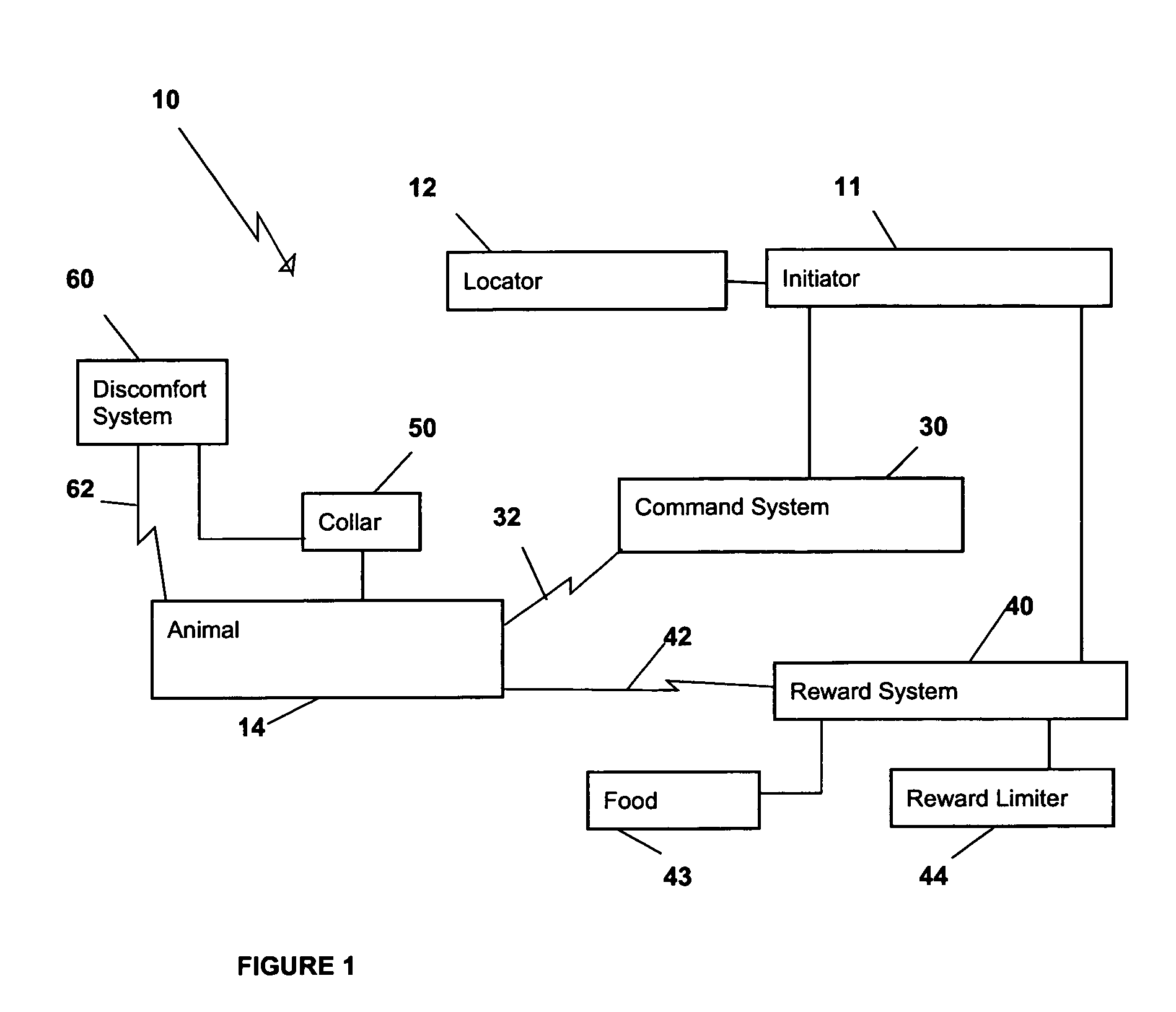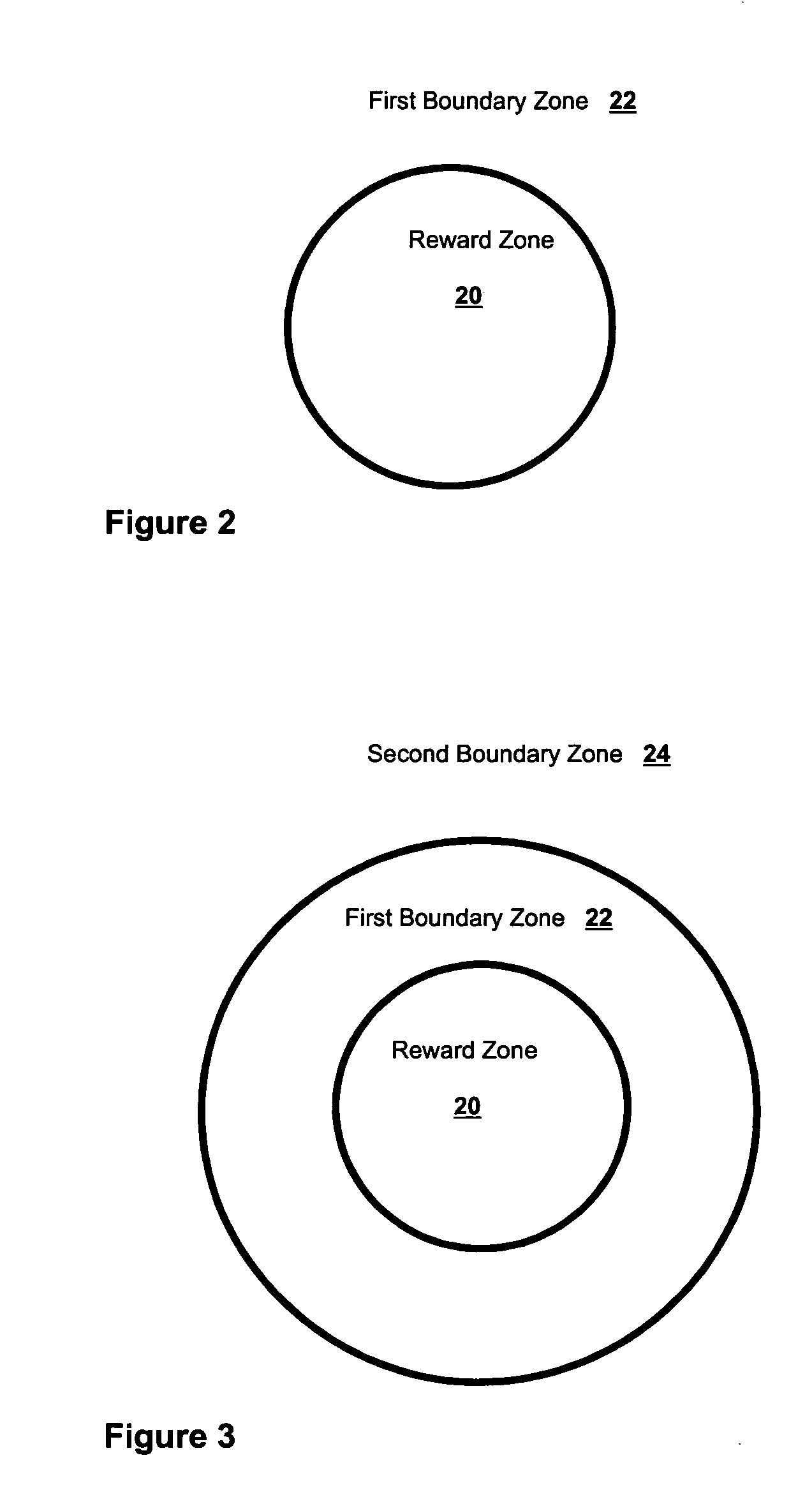Automated animal return system
a return system and automatic technology, applied in the field of automatic animal return system, can solve the problems of increasing the intensity of electric shock or discomforting noise, animal confusion, nervous and demotivated, etc., and achieve the effect of positive reinforcement, avoiding the development of animal confusion and nervousness, and not causing confusion or nervousness in the animal
- Summary
- Abstract
- Description
- Claims
- Application Information
AI Technical Summary
Benefits of technology
Problems solved by technology
Method used
Image
Examples
Embodiment Construction
[0024] Studies have shown that positive reinforcement or stimulation, such as food (referred to as primary reward reinforcement) is the most effective training method for animals including dogs and other pets. However, there may be times when a negative reinforcement, such as an electric shock or discomforting noise or odor, can be effective, but only if used in conjunction with a positive reward stimulation.
[0025] The most effective way to teach an animal to obey a command is to associate the command with an unlearned enforcer or reward, such as food. To train an animal to return or move to a desired location, a command such as “come” is issued and a food reward presented when obeyed, so that the animal associates the reward with its response to the command. Discomfort, or negative reinforcement, should only be used in conjunction with positive rewards.
[0026] It is therefore important to understand the difference between a positive and negative reward. Positive and negative rewar...
PUM
 Login to View More
Login to View More Abstract
Description
Claims
Application Information
 Login to View More
Login to View More - R&D
- Intellectual Property
- Life Sciences
- Materials
- Tech Scout
- Unparalleled Data Quality
- Higher Quality Content
- 60% Fewer Hallucinations
Browse by: Latest US Patents, China's latest patents, Technical Efficacy Thesaurus, Application Domain, Technology Topic, Popular Technical Reports.
© 2025 PatSnap. All rights reserved.Legal|Privacy policy|Modern Slavery Act Transparency Statement|Sitemap|About US| Contact US: help@patsnap.com



